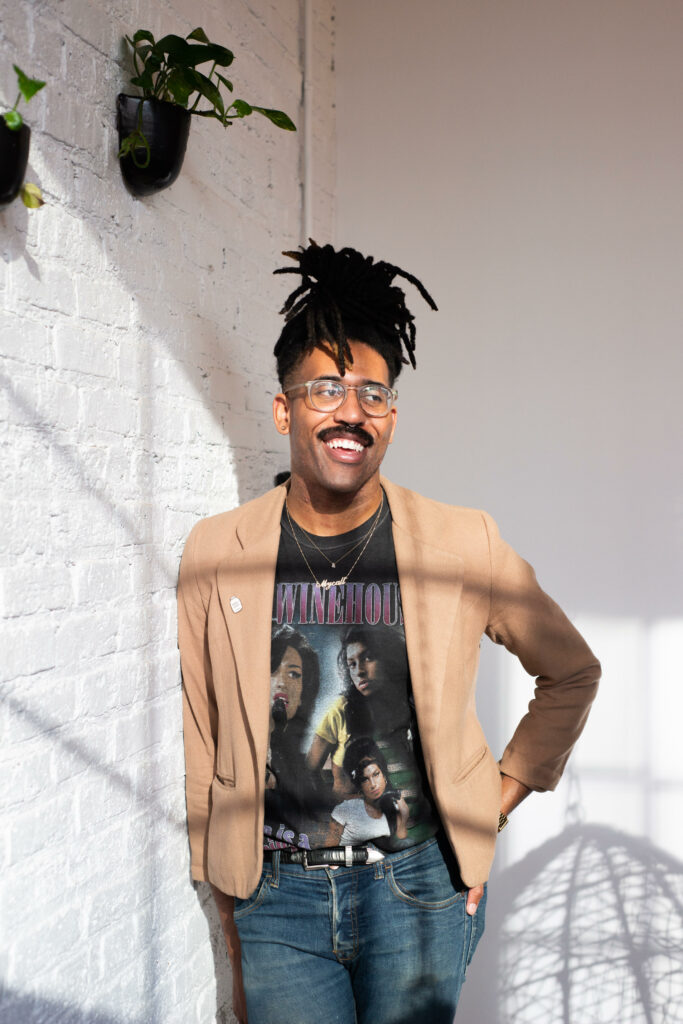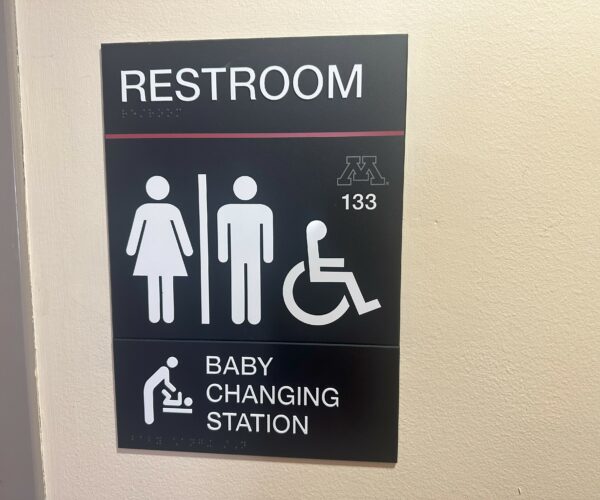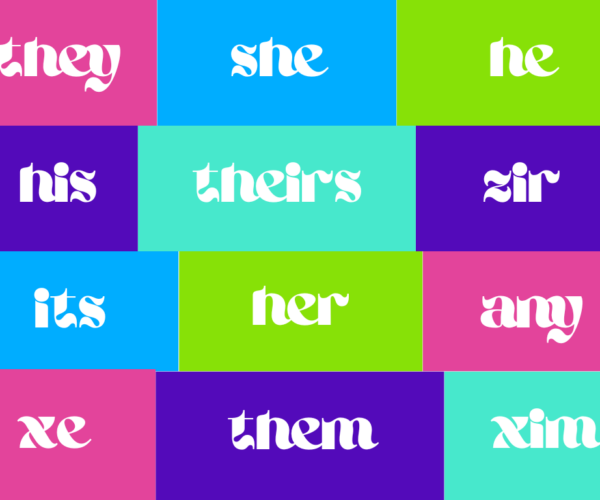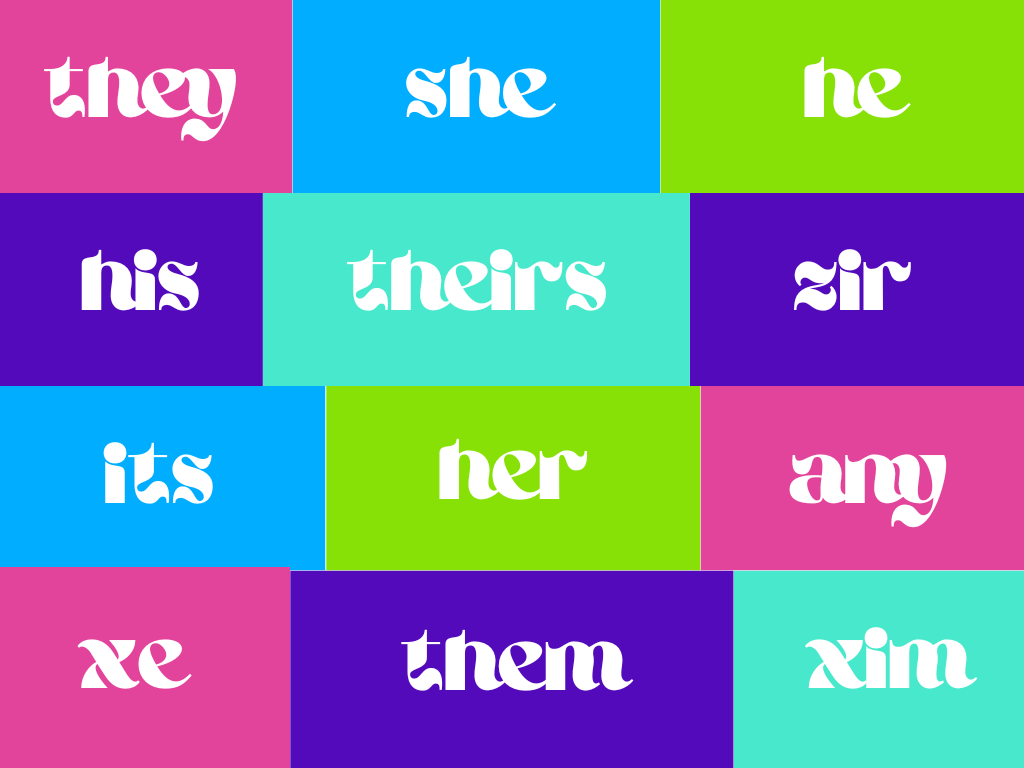By Amena Ahmed, Laura Mokaya and Sommer Wagen
Sarah Malmquist, an assistant professor in the Department of Biology Teaching and Learning at the University, understands that respecting students’ pronouns is as important as sustaining the education of new talent in her field.
“We have a lot of evidence from a wide variety of studies that LGBTQ people — and trans and nonbinary people in particular — are less likely to enter STEM fields and are less likely to stay because they feel excluded,” Malmquist said.
Biology, which deals with sex, gender and sexuality, is among the disciplines with the most gender-related challenges, she said. Sensitivity to pronouns can be the beginning of the classroom conversation.
“Part of it is just kind of basic things that can be applicable in any class,” Malmquist said. “Like sharing your own pronouns, inviting people in your class to use their own pronouns, you know, having that in part of your syllabus or things like that. Or how to handle someone repeatedly misgendering or mis-pronouning somebody in your class.”
Policy expects it
Respecting pronouns is University policy. The Equity and Access: Gender Identity, Gender Expression, Names and Pronouns policy commits faculty and staff to respect gender expression, including names and pronoun use.
According to the policy, members of the University are able to choose with whom and where they share their preferred name, identity and pronouns. In response, those who are given that information are expected to respect it.
In the classroom, faculty are expected to use preferred names and pronouns of their students, although the policy does not require any training.
According to an AccessU: Queer on Campus survey conducted in March, queer students seem either satisfied or neutral about faculty respect of pronouns. The survey found nearly half of queer respondents agreed that professors are respectful of pronouns, and a little more than one-third described themselves as neutral. Just 14% disagreed, saying faculty are not respectful.
But sometimes pronoun-related issues do arise in the classroom, such as faculty forgetting to ask about pronouns, misgendering students or simply letting the topic fall off the radar, according to survey respondents. Such instances can create a less-welcoming classroom.
Advocates for LGBTQ+ students on campus say it’s best to avoid mandatory training and instead encourage faculty to want to learn more about the subject.
Mycall Riley, director of the Gender and Sexuality Center for Queer and Trans Life (GSC), is usually the person faculty turn to when they have questions about pronoun use.

“You have to treat every single person differently,” Riley said. “Your form of training with them is when you meet them, and you understand what they’re OK with, and like, what they’re not OK with, and that’s going to be completely different from the next person.”
Faculty approaches vary
Since the policy was adopted in 2019, faculty have received notifications with each semester’s roster of student pronoun preferences. But their individual practices vary. Some invite students to share pronouns during class introductions, others do not. Some are comfortable with the range of pronouns they encounter, others less so.
“If I’m not given a space [to share my pronouns], then I tend to get very worried about having to correct or share,” said Emerson VanWiele, an art and art history student who uses they/them pronouns. “Giving students a space to share right away and then also professors setting an example by using people’s correct pronouns is important.”
Faculty comfort with pronouns appears to vary by college, according to interviews with survey respondents.
Claire Witzmann, who uses both she/her and they/them pronouns, is a senior at the University of Minnesota majoring in mechanical engineering. She said her STEM classes are “usually just lectures, so there’s less of an opportunity for pronouns,” something she described as “kind of a bummer.” But she said she sees a different approach in her liberal arts classes.
“In all of the liberal arts classes or discussions that I’ve had we always make sure to introduce with pronouns, and for the most part I feel they’re respected,” Witzmann said.
Sometimes insensitivity to pronouns extends to the curriculum. Lily Gordon, a nursing student, said she has never heard a professor ask for a student’s pronouns. When faculty in her program do bring up trans and nonbinary issues, she said it often feels like they do so out of obligation rather than sincere sensitivity.
Gordon described one instance in which a professor introduced a hypothetical patient in a case study as a nonbinary person who used they/them pronouns. Throughout the rest of the lesson, the faculty member referred to the patient with he/him pronouns.
“I’m like, ‘Are you kidding me?’” Gordon said. “If you’re gonna say this patient is nonbinary, you can respect this fake person’s pronouns.”
Lucy Gunelson, an environmental geoscience major, says faculty are often more proactive about pronouns in freshman seminars, where identity can easily be presented in one’s Zoom display name. But in upper-level classes in her major, where faculty are more hands-off, Gunelson said the burden shifts to trans and nonbinary students.
“It does create awkward moments,” Gunelson said. ”Let’s say a person does want to be referred to as a they/them or any other pronouns. It feels like a lot of responsibility on them, then they feel like the odd one out, and it’s not creating kind of an inclusive space.”
Mistakes, outreach, training
But such experiences in STEM are not universal. Meg Chyna, who uses they/them and she/her pronouns, is a nonbinary student in the University’s College of Science and Engineering (CSE) who said they have felt welcome in all STEM classes. Chyna recognizes faculty are trying.
“In my experience, all the professors I’ve had have been really open about that kind of thing and they always say ‘If I mess up, please correct me,’” Chyna said. “It’s nice to know that they’re willing to learn.”
Making mistakes is a part of learning, and many students said professors should embrace them as a part of learning to respect people’s pronouns. The response from a professor after they misgender someone is what matters.
“Honestly, the best response is a simple apology and then correct it for next time,” Chyna said. “If the professors don’t fully understand, they can always ask. I won’t get mad at that.”
In certain fields, professors go out of their way to create comfortable environments for all their students.
VanWiele, a student in Corinne Teed’s “Zines, Comics, and Books” class, said Teed, who is genderqueer, succeeded in creating a comfortable, inclusive environment in their classroom.
“They’re always encouraging conversations about their experience and always, you know, staying on top of pronouns and reminding people of theirs and others and talking about their experience as a professor who uses nonbinary pronouns,” VanWiele said. “They don’t make it a big deal. It’s just part of what their classroom looks like.”
As GSC director, Riley receives calls and emails on a regular basis from faculty asking how to most sensitively handle situations concerning pronoun misuse. Those queries are not seeking a “translator” to decoding students’ situations, but are instead highly specific situations to discuss, Riley said.
“It’s like, help, we have this really unique niche kind of moment,” Riley said, referring to the many different requests that arise concerning pronoun misuse.
Riley, who uses any and all pronouns, including they/them, said it’s better that training be “opt-in” for faculty. The GSC has found it “less effective when it’s mandatory,” they said.
This approach is not new. Riley said that, although the pronoun policy was not introduced until late 2019 and they have only been in the GSC director position for less than a year, the GSC has historically implemented myriad ways to support nonbinary and transgender faculty and students.
“For as long as I think GSC has been around, there has often been a lot of work around supporting and advocating for our trans and gender-expansive communities, even if it wasn’t, per se, in the form of a specific training,” Riley said. “There’s oftentimes relationships or oftentimes spaces and opportunities from offices like the GSC to really hone in on that support and advocacy.”
Respecting student pronoun choices is just one small action that can be taken to make sure trans and gender-expansive students and faculty feel seen and included more broadly, Riley said. Faculty need to understand the first step is seeing that each student has a different story, they said.
Bea Lohman, a nonbinary student at the University, agrees that understanding pronoun usage is just the beginning of the larger goal of understanding and seeing students. “I mean, it’s just a learning process for them. And they just need to keep an open mind, things change all the time.”




